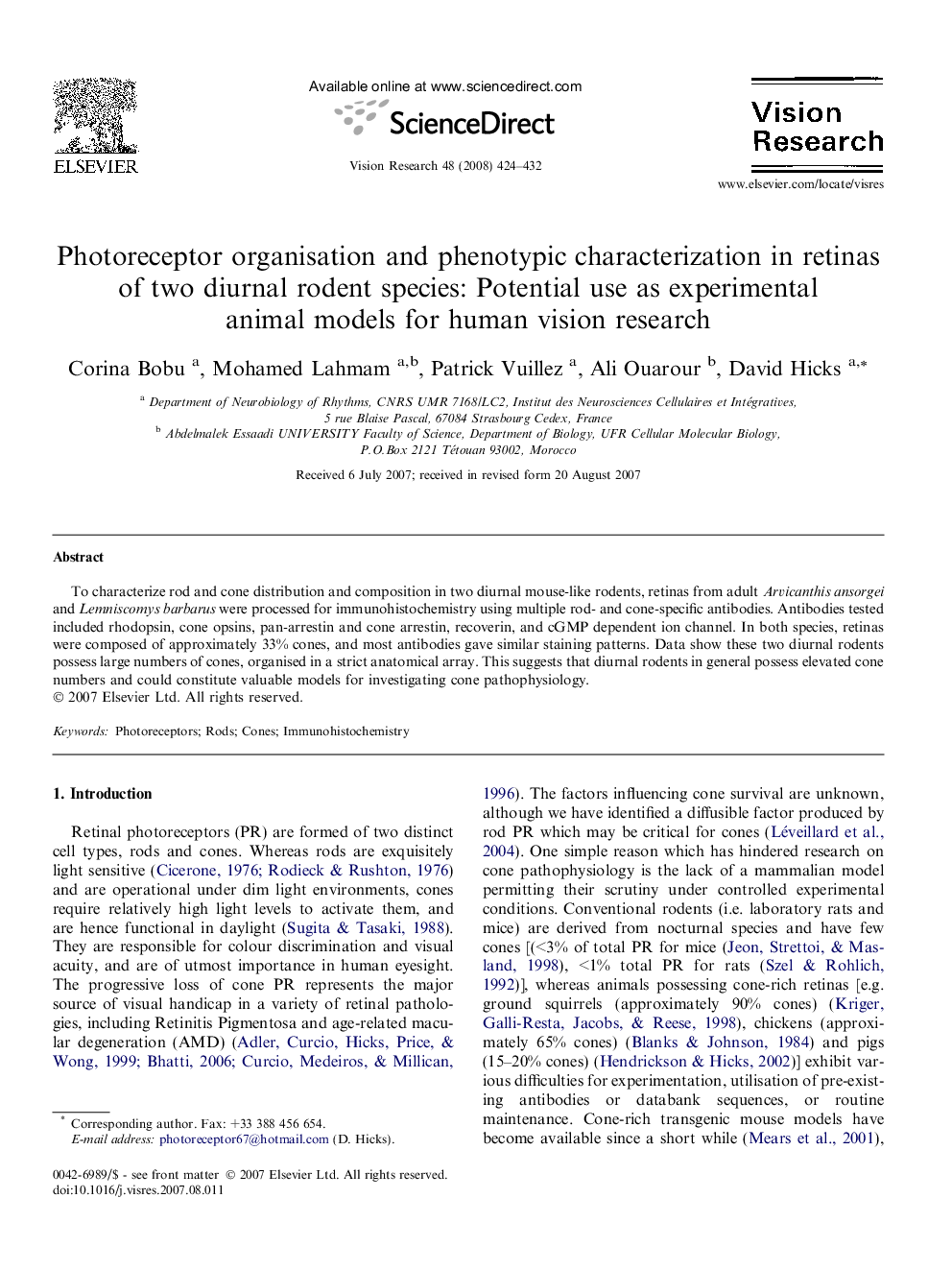| Article ID | Journal | Published Year | Pages | File Type |
|---|---|---|---|---|
| 4035080 | Vision Research | 2008 | 9 Pages |
To characterize rod and cone distribution and composition in two diurnal mouse-like rodents, retinas from adult Arvicanthis ansorgei and Lemniscomys barbarus were processed for immunohistochemistry using multiple rod- and cone-specific antibodies. Antibodies tested included rhodopsin, cone opsins, pan-arrestin and cone arrestin, recoverin, and cGMP dependent ion channel. In both species, retinas were composed of approximately 33% cones, and most antibodies gave similar staining patterns. Data show these two diurnal rodents possess large numbers of cones, organised in a strict anatomical array. This suggests that diurnal rodents in general possess elevated cone numbers and could constitute valuable models for investigating cone pathophysiology.
